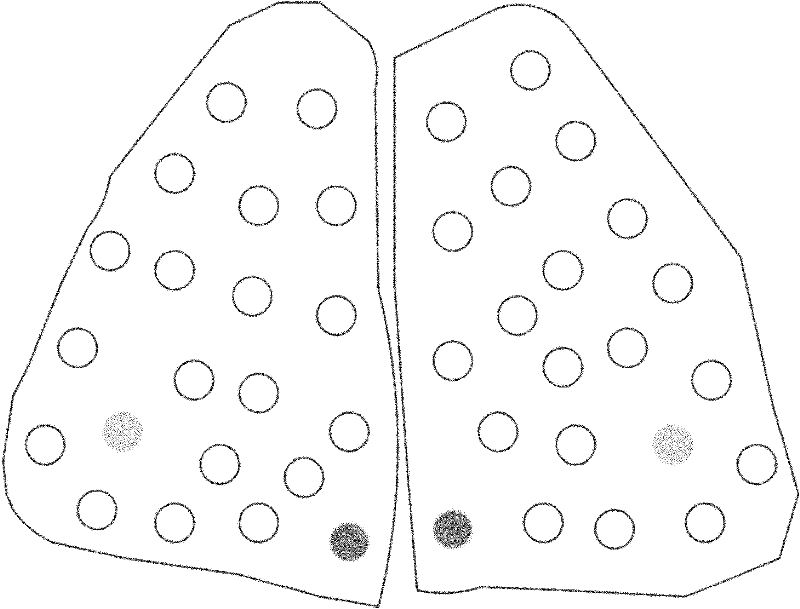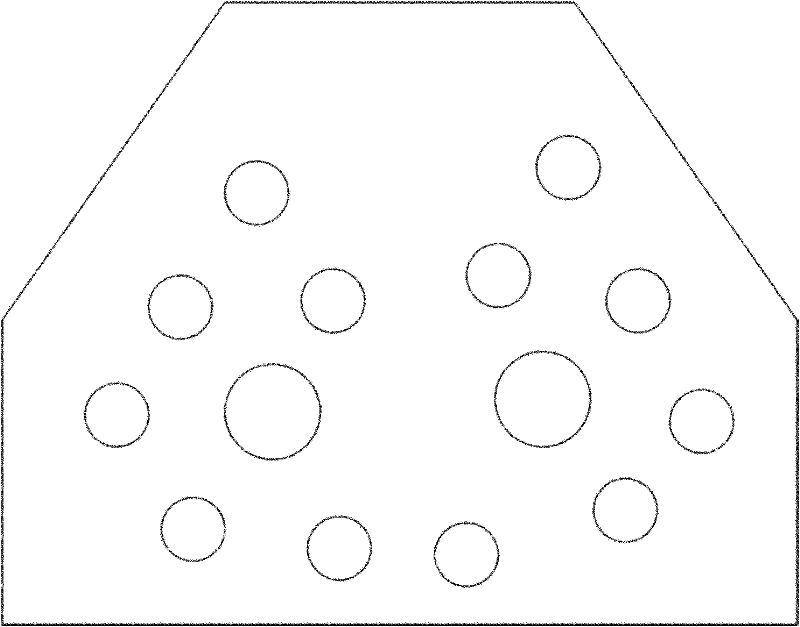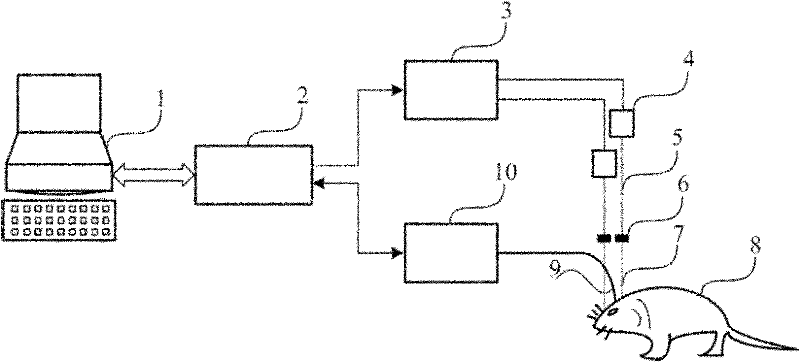Photogene smell simulation system
A simulation system and optogenetics technology, applied in the fields of biology and medicine, can solve problems such as the inability to accurately study the working mechanism of the olfactory system and the inability to activate a single olfactory glomerulus
- Summary
- Abstract
- Description
- Claims
- Application Information
AI Technical Summary
Problems solved by technology
Method used
Image
Examples
Embodiment Construction
[0032] The present invention is described in more detail below by means of examples, but the following examples are only illustrative, and the protection scope of the present invention is not limited by these examples.
[0033] Here mice are used as the study object, but the system is not limited to mouse studies. Express the excitatory light-sensitive protein Channelrhodopsi (ChR2), or ChEF or ChIEF light-sensitive protein, into the secondary olfactory nerve cells (such as granule cells, slaver cells, etc.) of mice by virus transfection or genetic means Above, the olfactory glomerulus, the synaptic connection of the first and second levels of the olfactory system, will specifically express light-sensitive proteins. When light stimulates these olfactory bulbs, it can open the photosensitive protein membrane channel, which in turn causes the opening of the membrane channel on the cell, allowing cations such as sodium and calcium to enter the cell, causing the depolarization of ...
PUM
 Login to View More
Login to View More Abstract
Description
Claims
Application Information
 Login to View More
Login to View More - R&D
- Intellectual Property
- Life Sciences
- Materials
- Tech Scout
- Unparalleled Data Quality
- Higher Quality Content
- 60% Fewer Hallucinations
Browse by: Latest US Patents, China's latest patents, Technical Efficacy Thesaurus, Application Domain, Technology Topic, Popular Technical Reports.
© 2025 PatSnap. All rights reserved.Legal|Privacy policy|Modern Slavery Act Transparency Statement|Sitemap|About US| Contact US: help@patsnap.com



